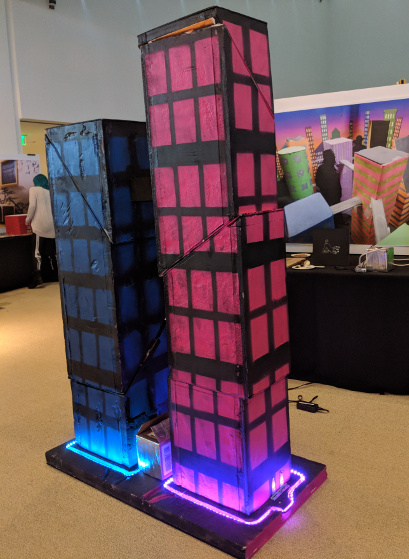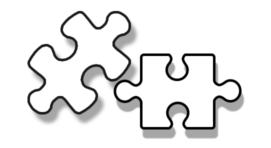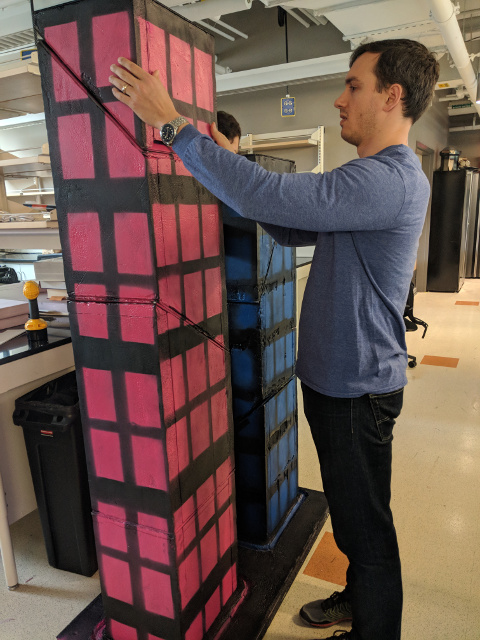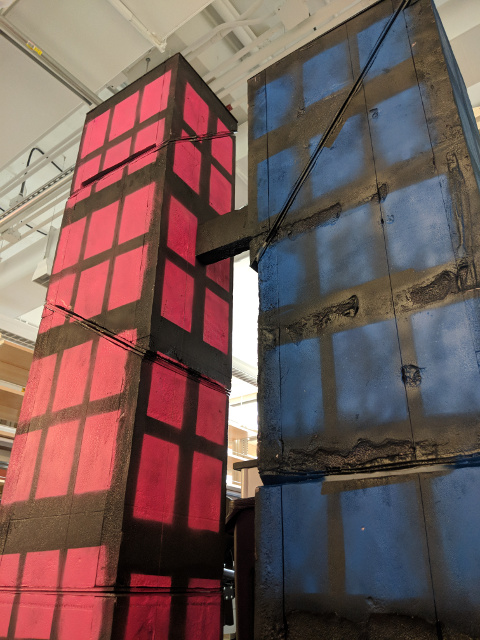
Scale model


The initial theme and storyboard focused on a post-apocalyptic city. While trying to flesh out that idea and determine how to meet the client need that the room be immersive, it became apparent that we weren't going to be able to achieve the user experience we wanted unless we spent more of our time focusing on room design elements rather than the game elements. Our goal was to give users a fun, team-building experience that was both a physical and mental challenge, and this inherently led to a somewhat silly game with large and unwieldy blocks that make it difficult to maneuver and see the entirety of the puzzle. Incorporating feedback and reviews, the room theme evolved to better match the game: a bright, colorful, cartoony city in distress needing the team's help. The aesthetic is intended to remind players of comic books, and make them feel like superheros in their own personal comic adventure.
Our goal for this project was to design a game that was both a physical and mental challenge and required teamwork to complete. We also wanted to create a game that was easy to figure out, but difficult to complete. "EARTHQUAKE!" requires that players use spatial reasoning, communication, and their bodies to complete the game successfully.
Below, the evolution of the idea can be seen.

The below images show the final design. The picture on the right is a model of what the room will ideally look like with all buildings completed and installed, while picture on the left shows the actual building prototypes we created.

Scale model

Completed buildings

In addition to the theme changing, the major mechanism of the game changed as well. After receiving feedback that the original idea of an internal support for one of the buildings that would then retract to reset the game would take some of the "magic" away, it was decided that this reset mechanism should be completely hidden from view. This also meant that teams would no longer have the one internally supported easy to construct building to give them confidence at the outset of the game.
To make the game a bit less frustrating for players, the angles of the cuts were adjusted so that the blocks don't immediately slip off, moving the focus of the game toward using teamwork to determine the sequencing of the blocks rather than simply holding them up during construction.

Assembling the blocks into a building

Completed buildings being held up by bridge